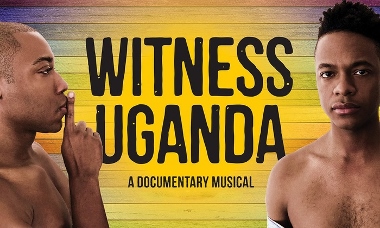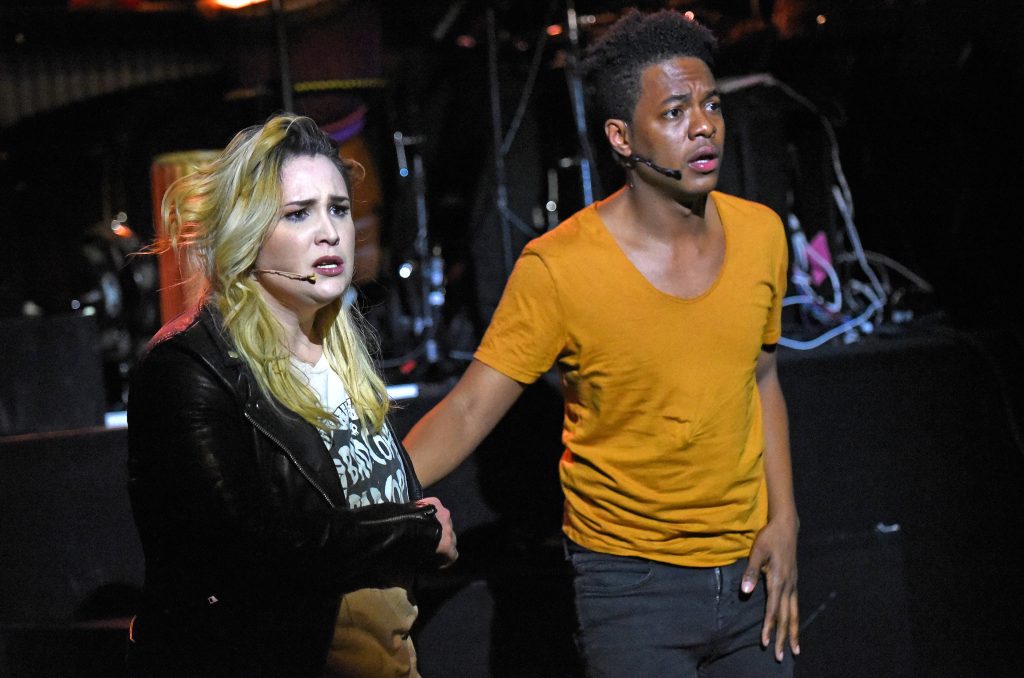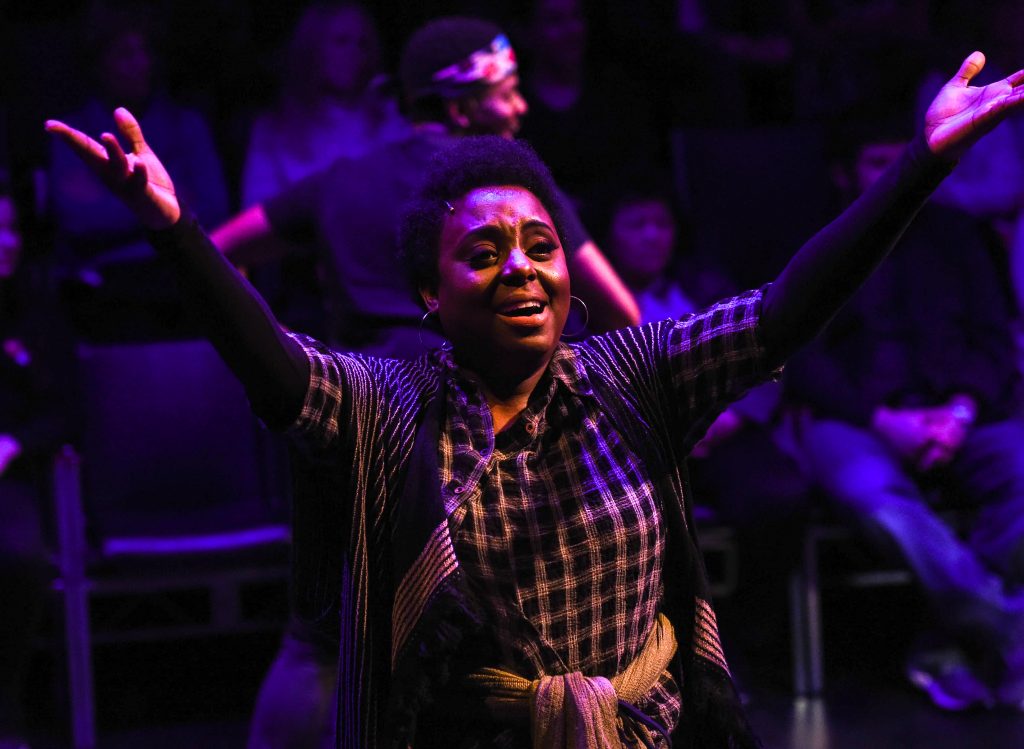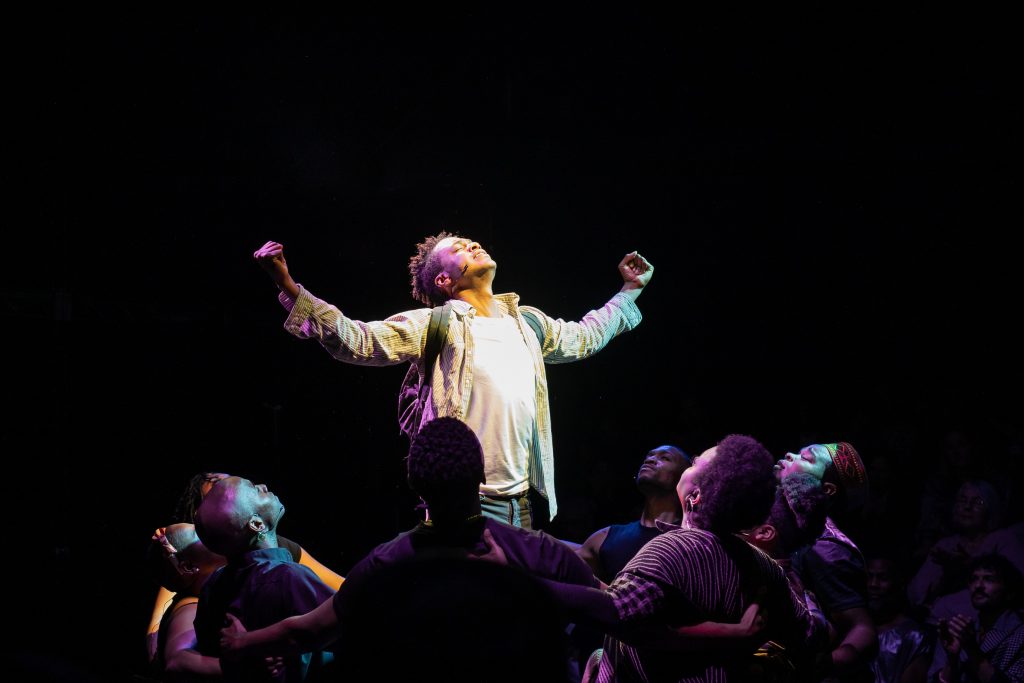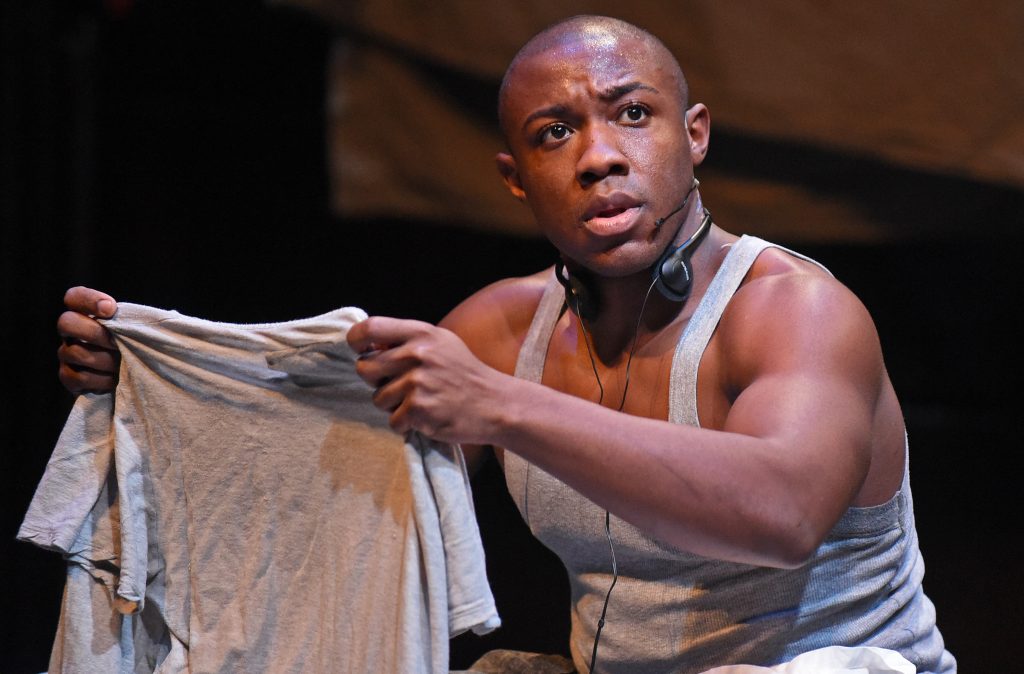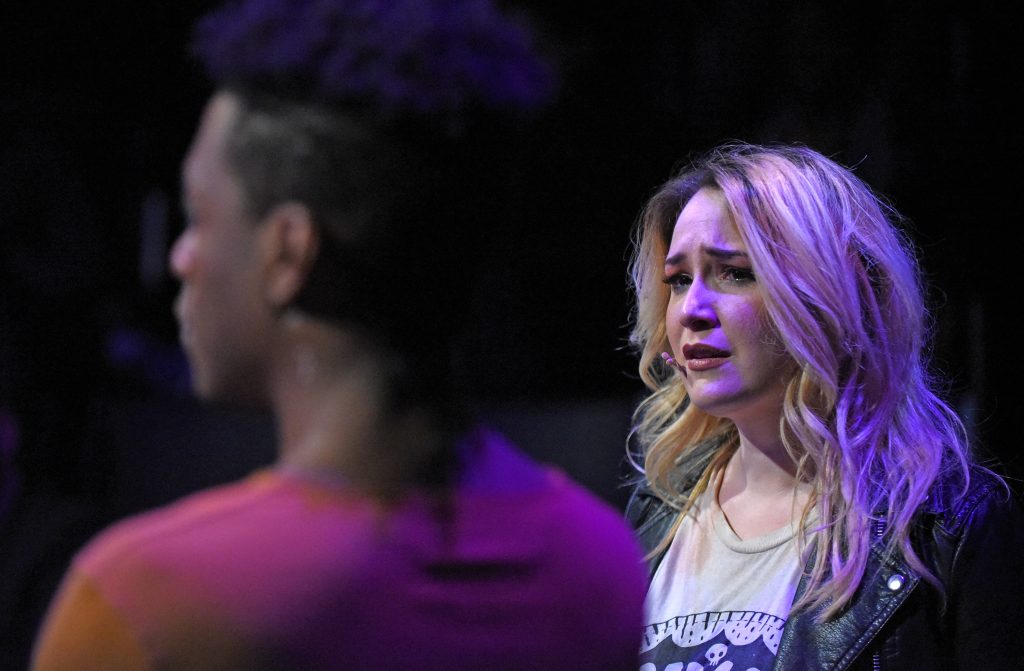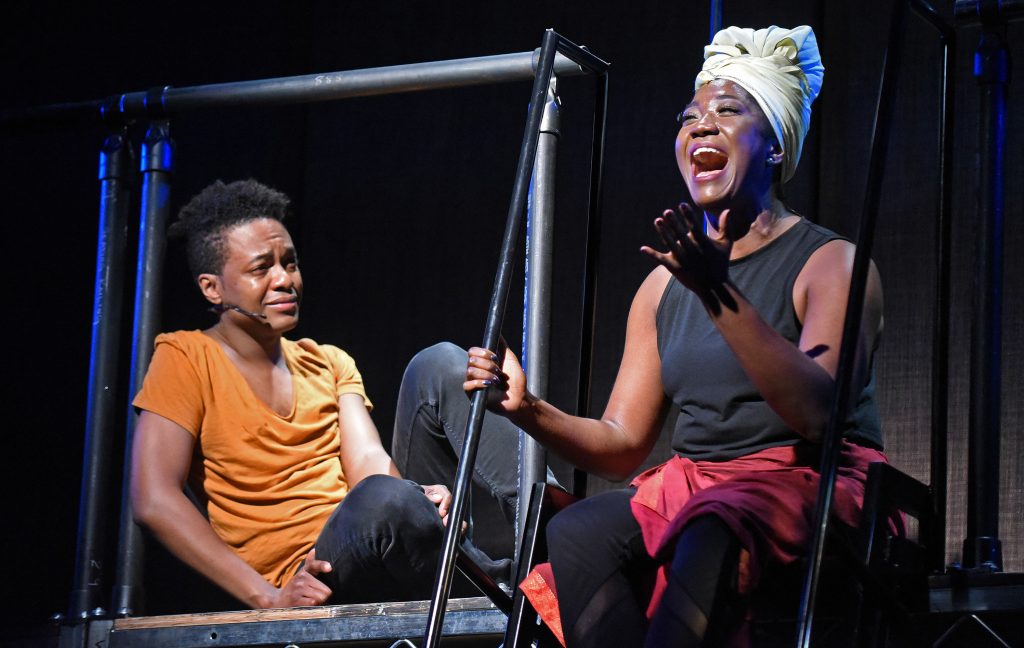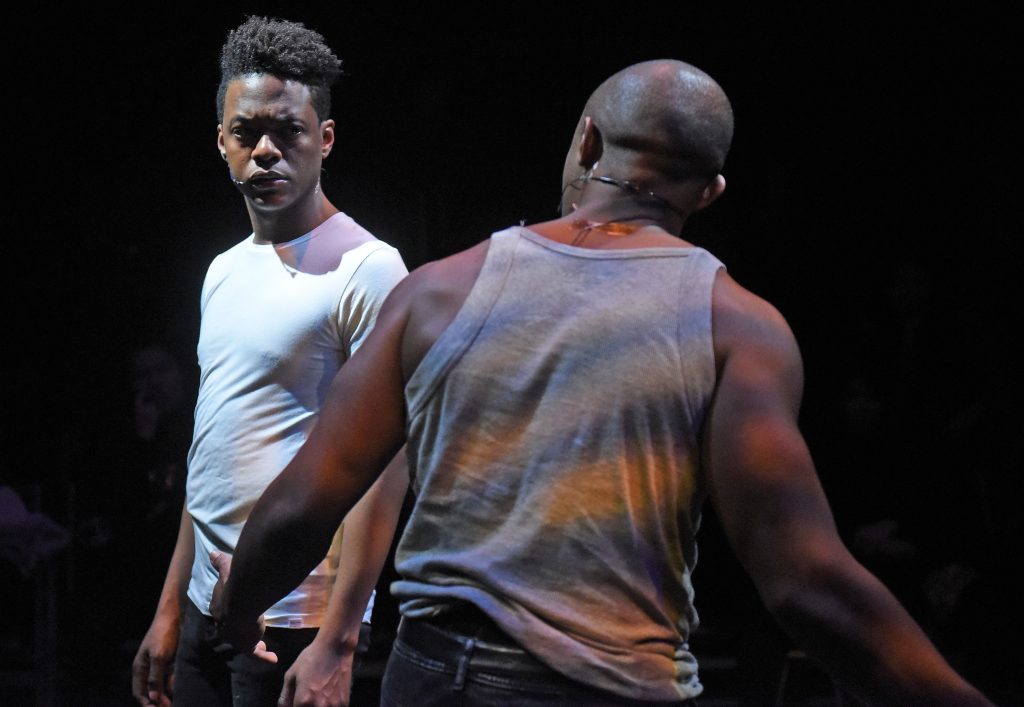WITNESSING UGANDA IS AMAZING,
EVEN THOUGH THE SHOW NEEDS WORK
Griffin is a young black New York actor in search of more than a career. When he is kicked out of his church choir because he’s gay, it prompts him to join a volunteer program working with orphaned youth in Uganda. Once there in the summer of 2005, he thinks he will help build a church and maybe teach. But Griffin’s passage of enlightenment gets convoluted as he learns seedy facts about the program and a corrupt pastor, finding that making a difference can be dangerous. When he encounters a group of orphaned street teens, he decides he wants to help, which proves to be nearly impossible.
This true story has been turned into a musical documentary (a musicmentary?) but it turns out that writing a successful musical is as complicated as fighting socioeconomic politics in Africa ’¦ even more so. With book, music and lyrics by the real-life American aid worker, Griffin Matthews, and his writing partner Matt Gould, Witness Uganda attacks the Wallis’s Lovelace black-box theater with force under Matthews’ direction. (The play was originally directed by Diane Paulus — with Griffin playing his character Griffin — and performed in workshop style at American Repertory Theater in 2014.)
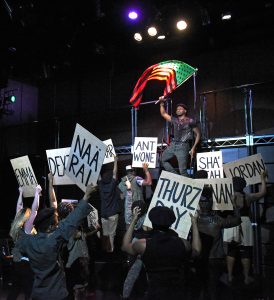 Staged here alley style — the viewers face each other with the playing area between them — the evening comes off like a celebration of life even with the harsh story line and the musical’s limited success on paper. That is due to the infectious joyful ensemble, exciting rhythms, and Abdur-Rahim Jackson’s thrilling and highly exhilarating tribal/jazz/modern choreography. Matthews’ fluid, urgent, creative staging takes place in front of us, in the aisles, a scaffold-like stage on one side, and the band’s realm on the other (on keys is Gould himself joined by the hot sounds of Joel Alpers, Jonny Morrow, and Deon M. Hairston.)
Staged here alley style — the viewers face each other with the playing area between them — the evening comes off like a celebration of life even with the harsh story line and the musical’s limited success on paper. That is due to the infectious joyful ensemble, exciting rhythms, and Abdur-Rahim Jackson’s thrilling and highly exhilarating tribal/jazz/modern choreography. Matthews’ fluid, urgent, creative staging takes place in front of us, in the aisles, a scaffold-like stage on one side, and the band’s realm on the other (on keys is Gould himself joined by the hot sounds of Joel Alpers, Jonny Morrow, and Deon M. Hairston.)
The bare-bones production utilizes set designer Connor MacPhee’s moving platforms on casters (including one with Gould’s piano!), David Hernandez’s textured lighting on black boxes, Carlton Jones’s appropriately poor-looking costumes, and Martin Carrillo’s adequate sound design (the band with two percussionists is overmiked).
The situations and characters remain interesting throughout, and there’s some surprisingly compelling dialogue – especially as it concerns attitudes about gay folk and scenes with Griffin’s roommate from New York, a white, stinging-yet-loving singer-songwriter named Ryan. Yet sticking to a true story means that other dialogue becomes serviceable more than moving.
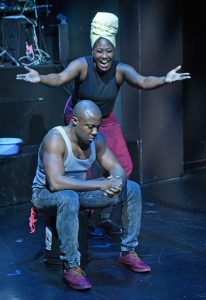 Even with the boffo triple-threat talent and visual feast, the evening truly wears thin on more than one occasion with some extraordinarily banal, witless, repetitive, muddled lyrics (not helped by the terrific Swahili accents), pitiable rhymes, and similar-sounding songs that almost all have the same driving beat – many of which become almost indistinguishable (African melodies are thrown into a pop/R&B mix). So much of it cascades over us without resonating.
Even with the boffo triple-threat talent and visual feast, the evening truly wears thin on more than one occasion with some extraordinarily banal, witless, repetitive, muddled lyrics (not helped by the terrific Swahili accents), pitiable rhymes, and similar-sounding songs that almost all have the same driving beat – many of which become almost indistinguishable (African melodies are thrown into a pop/R&B mix). So much of it cascades over us without resonating.
There’s a huge beating heart at the center of this work, which was originally created to finance a nonprofit called the Uganda Project to pay for education for about eight kids, which was a struggle to keep going after the economy tanked in 2008. I recommend seeing the compelling talent at The Wallis, and I was moved to want to know more about the orphans of Uganda (more than 2 million in a country of an estimated 35 million people), but the creators’ need to rethink their vision if they want more witnesses.
photos by Kevin Parry, Dan Steinberg, and Sean Daniels-DVR Productions
Witness Uganda: A Documentary Musical
Lovelace Studio Theater
Wallis Annenberg Center for the Performing Arts
9390 N. Santa Monica Blvd.
ends on February 23, 2019EXTENDED to March 3, 2019
for tickets, call 310.746.4000 or visit The Wallis
